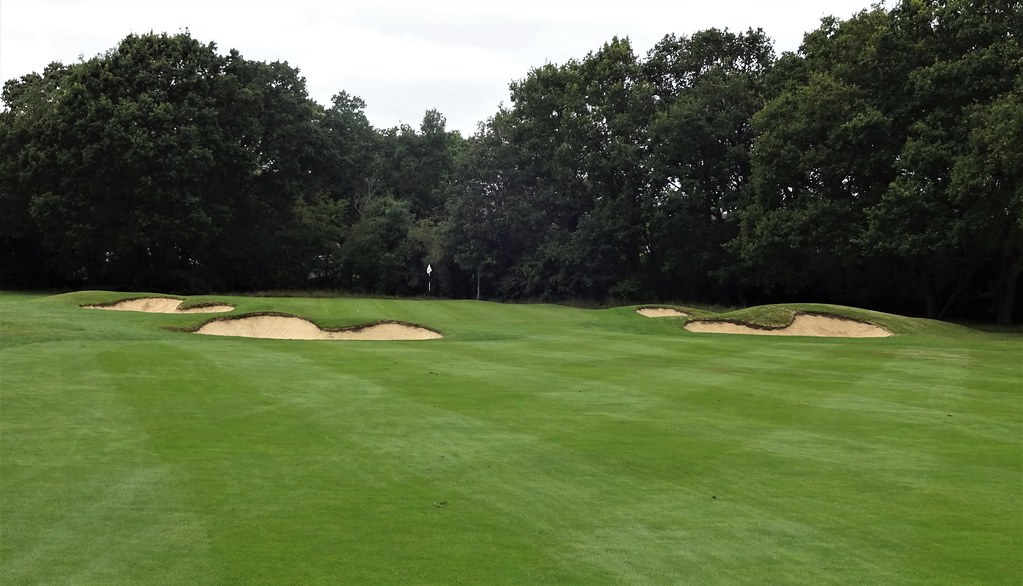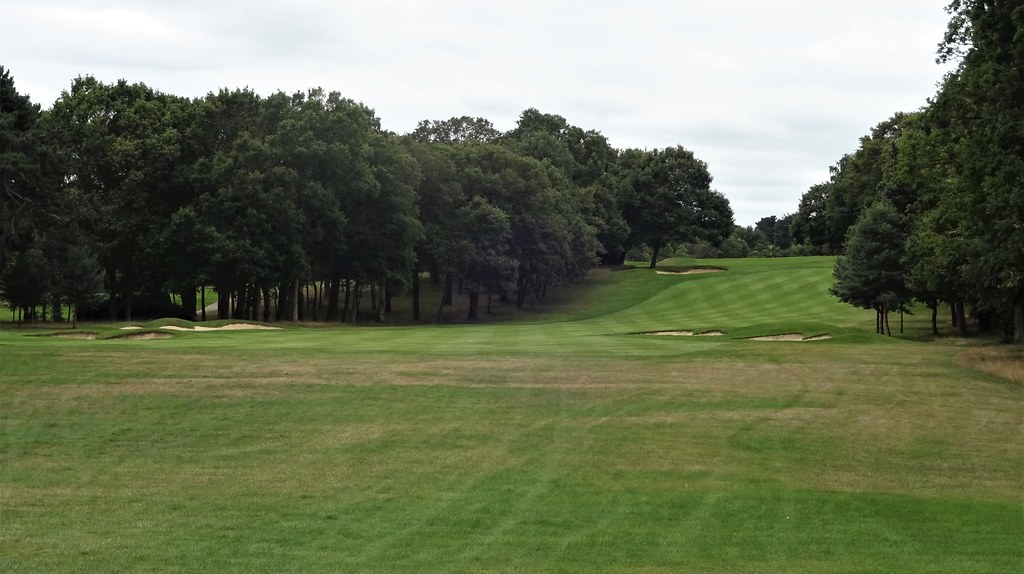Following his contribution to the creation of Worplesdon, JF Abercomby chaired a meeting of Coombe Hill in January 1910 which led to the opening of the new course in May 1911. While Abercromby is the architect of record, it is thought he had the benefit of consulting with Willie Park Jr on the project. While a murky figure in the early years of British golf architecture, Abercromby is generally credited for additional designs of which Addington (with Colt's able assistance) is the most respected. Knole Park is also a very fine example of Aber’s work. An interesting characteristic of all these courses is the hilly nature of the terrain and Aber's willingness to to create bold holes using the slopes. In that respect Coombe Hill is no different.


Coombe Hill can claim four Open champions among its professionals. Sandy Herd, the club’s first professional and the would be 4th member of the Great Triumvirate, claimed the Claret Jug in 1902. Arthur Havers, the second Coombe Hill pro, won the Open in 1923, a victory which nullified Walter Hagen’s bid for his third consecutive victory. Henry Cotton, an often forgotten man in British golf, won the Open Championship in 1934, 1937 and 1948. Cotton was among the first British professional golfers not to rely on a club position to earn his living. The man who has held the Claret Jug longer than anybody, Dick Burton, won the last Open held before the outbreak of WWII at St Andrews in 1939. When normal scheduling resumed at St Andrews in 1946, Burton, who served in the RAF during the war, wrote the following note to the Royal & Ancient: “Dear Sirs, Please find enclosed my fee of five guineas for this year’s open. I will bring the trophy back when I come.”
Dick Burton

Located on top of a hill above Kingston upon Thames proper, entering the club is to enter a private estate. Directly across the driveway are swank homes. The same is true for the course, but the housing is well hidden by trees. Surprisingly, Coombe Hill is quite secluded with very little in the way outside noise even with the A3 just down the road. Teeing off on the first is not so different from the discreet entrance to the club. The hole obviously turns right down the hill, but the landing zone and green are not to be seen. An added devious element is a fairway which slopes in the opposite direction of the dogleg. The short approach to the front to back green is quite tricky, especially if the hole is between the bunkers. Royal Wimbledon is in the far distance on the hill the other side of the A3.

The second is a bit like a straight jacket, water and lost ball right, trees left. Notice the tree inside the fairway corridor near the greenside bunker. This is the first of many instances of vegetation spoiling a view and/or creating out of place awkwardness.

There are also many cases of trees inside natural tree-line boundaries such as ditches. There are holes in which longer hitters will likely want to throttle back, the third isn't one such case. A big hitter gains great advantage as the bunkers play no part in their strategy.

I like the simple nature of the uphill approach.

Another sharp dogleg left, the 4th is a reachable par 5 if one can navigate through the bunkers near the green.


An uphill par 5, the fairway bunkers on the 5th are more for the 230-250 hitter.

The par 3s are fairly well celebrated, but I wasn't taken by the front 9 offerings. The 6th, however, does have the advantage of a greensite in what feels like a meadow. This ambience is somewhat spoiled by the hard look path. The issue crops up several times in the round.

The next two holes are very good and quite different from each other. Playing downhill and ignoring the visual mess, the seventh features a pack of bunkers in the drive area. Being a short par 4, one may think that a lay-up is prudent, but there really isn't a good lay-up area.

The push-up green is slightly angled to favour a well placed drive.

Heading back up the hill, the tough 8th requires precision and length.

The front nine ends with another drop shot short hole.

The back nine is decidedly more difficult than the front even though the distance is almost exactly the same at 3153 yards. A blind drive, the 10th plays over what is thought to be a V1 flying bomb crater. The course and nearby surrounding area were hit with as many as 25 high explosive shells in a short period during The Blitz between September and November 1940. At the start of The Blitz, London was bombed 56 out of 57 days from 7 September 1940.

Many of Coombe Hill's best holes are the toughest. The stretch from 10-12 is the purple patch and all are demanding holes. The 11th.



Much like the 7th, trees are doing their best to spoil the hole. Its difficult to discern, but there is a steep drop-off left and a bail zone right. This is a very intimidating, but excellent short hole.

More to follow.
Ciao